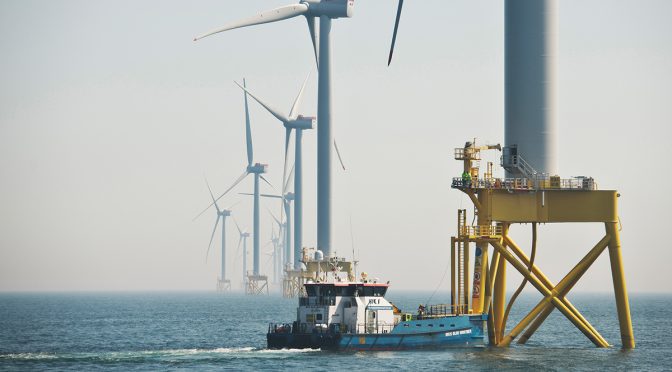As the world grapples with the effects of climate change and the urgent need to reduce greenhouse gas emissions, the rise of offshore wind farms is transforming the seascape and revolutionizing the renewable energy sector. With the potential to generate vast amounts of clean electricity, offshore wind power is becoming an increasingly important player in the global transition to a more sustainable energy future.
Offshore wind farms, which consist of large wind turbines installed in the ocean, are not a new concept. The first offshore wind farm was installed in Denmark in 1991, and since then, the technology has evolved and expanded rapidly. Today, there are more than 100 offshore wind farms in operation worldwide, with a combined capacity of over 23 gigawatts (GW). This rapid growth is expected to continue, with the International Energy Agency (IEA) predicting that offshore wind capacity could increase 15-fold by 2040, reaching over 350 GW.
One of the key drivers behind the rise of offshore wind farms is their ability to generate large amounts of electricity without producing harmful greenhouse gas emissions. Offshore wind turbines are typically larger and more powerful than their onshore counterparts, as they can take advantage of the stronger and more consistent winds found at sea. This means that offshore wind farms can generate more electricity per unit of installed capacity, making them an attractive option for countries looking to reduce their reliance on fossil fuels and meet their climate change targets.
Another advantage of offshore wind farms is that they can be located far from densely populated areas, reducing the impact on local communities and ecosystems. This is particularly important in countries with limited land availability or where onshore wind farms face significant opposition due to concerns about noise, visual impact, or harm to wildlife. By locating wind turbines in the ocean, these issues can be largely mitigated, making offshore wind power a more socially and environmentally acceptable option.
The rise of offshore wind farms has also been facilitated by significant advances in technology and reductions in cost. Over the past decade, the size and efficiency of wind turbines have increased dramatically, while the cost of installation and maintenance has fallen. This has made offshore wind power more competitive with other forms of electricity generation, including fossil fuels and nuclear power. In fact, recent auctions for offshore wind projects in Europe have seen prices fall to record lows, with some projects expected to generate electricity at a lower cost than new gas-fired power plants.
Despite the many advantages of offshore wind power, there are also challenges that must be addressed in order to fully realize its potential. One of the main challenges is the need for significant investment in grid infrastructure and energy storage solutions, as the intermittent nature of wind power can create challenges for grid stability and reliability. Additionally, the development of offshore wind farms can face opposition from certain stakeholders, such as the fishing industry or coastal communities concerned about the impact on tourism or marine life.
However, as the world moves towards a more sustainable energy future, the benefits of offshore wind power are becoming increasingly difficult to ignore. With the potential to generate vast amounts of clean electricity, create jobs, and drive innovation in the renewable energy sector, offshore wind farms are set to play a crucial role in the global energy transition. As governments, businesses, and communities around the world continue to embrace this transformative technology, the seascape will continue to change, ushering in a new era of clean, renewable energy.

